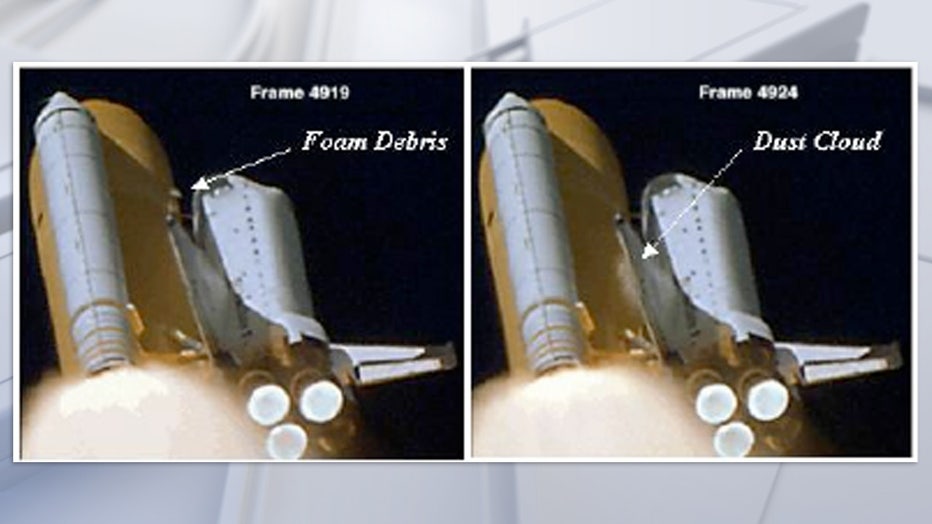Remembering space shuttle Columbia, 20 years later
CAPE CANAVERAL, Fla. - On a sleepy winter Saturday morning in 2003, most Americans had no idea that seven astronauts were gliding back to Earth after more than two weeks in space. But the whole nation would soon know that space shuttle Columbia was not going to make it home.
Columbia's STS-107 mission launched on January 16, 2003, and its crew members had conducted a successful flight dedicated to science -- a rarity amidst a busy flight schedule devoted mostly to space station construction missions.
But during that launch, a piece of foam from the shuttle's orange external tank had broken off and slammed into the left wing of the orbiter. NASA's engineers spotted the incident on launch footage -- the impact sent a cloud of debris into the air as the shuttle continued upwards -- but did not realize that it had punched a hole in the leading edge of Columbia's wing.

Images via NASA
As the shuttle roared back into the atmosphere on that Saturday morning two weeks later, it faced temperatures approaching 3,000 degrees -- normal for an object returning from orbit and the reason the orbiters were covered with protective tiles. But this time, the hole in the wing allowed superheated gas inside that would eventually burn through the wing and cause Columbia to fly fatally out of control.
By the time Mission Control was aware that Columbia was overdue, fiery white streaks had appeared in the skies over Texas, and pieces of the craft would soon fall from the skies over three states.
All seven astronauts -- Michael Anderson, David Brown, Kalpana Chawla, Laurel Clark, Rick Husband, William McCool, and Ilan Ramon -- were killed.
The subsequent investigation determined the NASA had underestimated the potential danger of the foam debris, which had been a problem on a number of other launches.
The review board also looked at the question of whether the astronauts could have been saved if NASA had known about the wing damage. Had they taken immediate action, they decided, it could have been possible to pull space shuttle Atlantis out of processing and launch it on an unprecedented rescue mission, though there would have been no way to get Columbia itself home.
They also determined that Columbia's astronauts could have attempted a risky on-orbit repair themselves, but there was no guarantee that it would have worked.
LINK: NASA's archived Columbia mission page
After the accident, President George W. Bush directed NASA to complete the space station, then retire the shuttle fleet in favor of a new launch system. Space shuttle Atlantis flew the program's final mission in July of 2011.
For almost a decade, NASA relied on the Russians to ferry astronauts to and from the space station until SpaceX's Dragon space taxi was ready in 2020. NASA's new Space Launch System finally debuted on an uncrewed test flight just a few months ago.
NASA pauses each year to remember the Columbia crew, along with the astronauts who died in the January 28, 1986 Challenger explosion and the January 27, 1967 Apollo 1 fire.
PHOTOS: Apollo 1 memorial ceremony, 50 years after deadly fire

